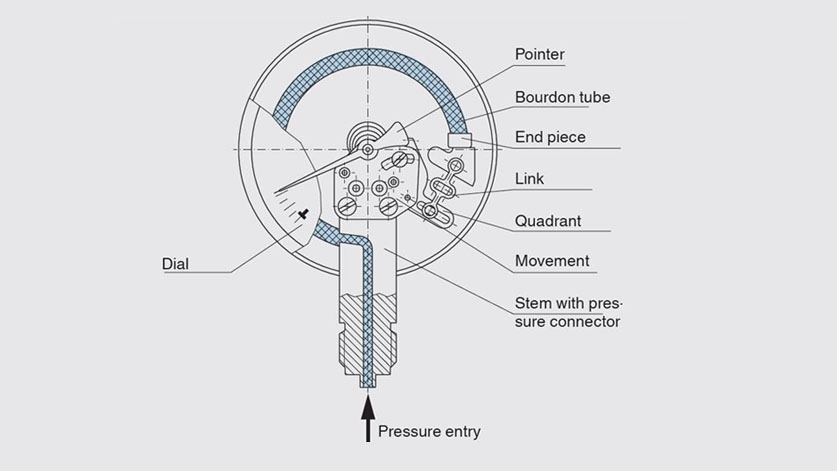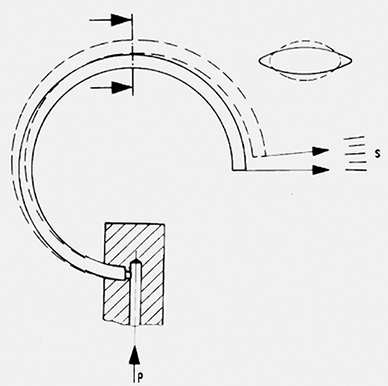
Bourdon tube pressure gauges are the most frequently used mechanical pressure measuring instruments. Their pressure element is often referred to as a Bourdon tube: The French engineer Eugène Bourdon made use of this functional principle in the middle of the 19th century. It is based on an elastic spring, a c-shaped, bent tube with an oval cross-section.
When the internal space of the Bourdon tube is pressurised, the cross-section is thus altered towards a circular shape. The hoop stresses that are created in this process increase the radius of the c-shaped tube. As a result, the end of the tube moves by around two or three millimetres. This deflection is a measure of the pressure. It is transferred to a movement, which turns the linear deflection into a rotary movement and, via a pointer, makes this visible on a scale.
Bourdon tube variants
With the c-shaped bent Bourdon tubes, pressures up to 60 bar can be displayed. For higher pressures, helical or spiral-type Bourdon tubes are used. Depending on the geometry, material and material thickness, pressures up to 7,000 bar can be realised. Depending on the requirement, the pressure elements are made of copper alloys, stainless steels or special materials such as Monel.
Note
Further information on Bourdon tube pressure gauges can be found on the WIKA website.



Informative
Hi
It is very usefull.